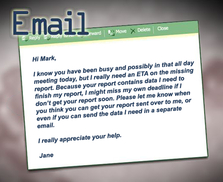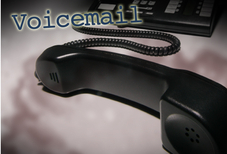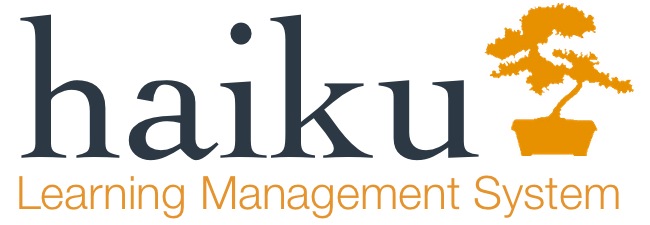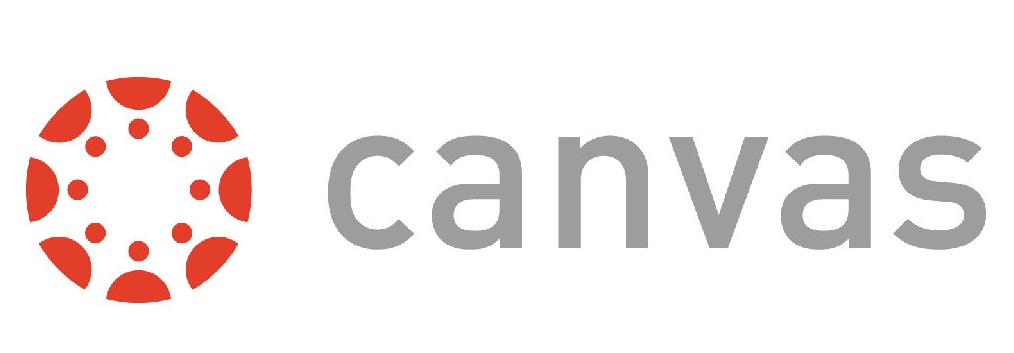| The timing of this blog assignment is interesting. This week, I was preforming the initial Quality Assurance Review on a course for one of our colleges. The SME on this development is a remote faculty member who has never developed a course for our university before. As I started my review, I found the sequencing of and context provided for several assignments to be confusing and/or unclear – so much so that I was unable to continue performing the review without obtaining clarification from the SME regarding the intended meaning of these components. |
I had promised to provide the college with my initial recommendations by EOB next Tuesday, 8/13. The course cannot be built in the shell (LMS) until the initial QA is performed, and it is scheduled to copy on 8/17 for a go-live date of 8/27. The project was in danger of meeting these deadlines, and I knew I needed to inform key stakeholders of the risk.

In order to meet our timeline and ensure the academic quality of the course, I followed similar steps to those suggested in our resources this week:
I remained calm, analyzed the situation, and made a solid case for my new requirements (Greer, 2010, p. 36).
I then approached my associate director as well as the program chair for the college with my exact concerns as they related to our schedule and the academic quality of the finished product (Greer, 2010, p. 36).
I remained calm, analyzed the situation, and made a solid case for my new requirements (Greer, 2010, p. 36).
I then approached my associate director as well as the program chair for the college with my exact concerns as they related to our schedule and the academic quality of the finished product (Greer, 2010, p. 36).
Both stakeholders were receptive to my concerns. My associate director gave me permission to delegate some of the other projects I am currently working on to another team member so I could concentrate my efforts on this course development. The program chair and I then discussed a few options for how to resolve the situation with as little impact as possible (Greer, 2010, p. 36):
The program chair and I agreed that the latter option would be best because (1) it wouldn’t pull him away from other pressing matters, and (2) it would provide an opportunity for the faculty member to learn best practices as they relate to our development process.
The program chair sent a preliminary email to the faculty member (marked “high importance” and alerting her to expect my conference request). I sent a copy of the notes I’d made so far to the faculty member when I requested the conference so she would be aware of the key issues I’d cited and needed clarification on in order to move forward.
An hour after I sent my email, the faculty member and I were on the phone reviewing and discussing the course. When we finished our conversation (another hour later), I had a clear picture of how to proceed without altering her intended meaning of and goals for the assignments.
Shortly thereafter, I composed a “thank you” email to the faculty member and sent a summary email to my associate director and the program chair (Greer, 2010, p. 36). In my summary email, I noted that no change in the project schedule was indicated (i.e., the promised deadline would still be met).
Finally, I forwarded the faculty member’s response to my thank you email, in which she expressed her appreciation me for taking the time to walk her through the process and offered to answer any further questions I may have regarding the course as I move through the rest of my initial review, to my associate director and the program chair.
- He and I could work together and resolve the issues in a short period of time; or
- I could request a phone conference with the faculty member so she and I could work together to resolve the issues.
The program chair and I agreed that the latter option would be best because (1) it wouldn’t pull him away from other pressing matters, and (2) it would provide an opportunity for the faculty member to learn best practices as they relate to our development process.
The program chair sent a preliminary email to the faculty member (marked “high importance” and alerting her to expect my conference request). I sent a copy of the notes I’d made so far to the faculty member when I requested the conference so she would be aware of the key issues I’d cited and needed clarification on in order to move forward.
An hour after I sent my email, the faculty member and I were on the phone reviewing and discussing the course. When we finished our conversation (another hour later), I had a clear picture of how to proceed without altering her intended meaning of and goals for the assignments.
Shortly thereafter, I composed a “thank you” email to the faculty member and sent a summary email to my associate director and the program chair (Greer, 2010, p. 36). In my summary email, I noted that no change in the project schedule was indicated (i.e., the promised deadline would still be met).
Finally, I forwarded the faculty member’s response to my thank you email, in which she expressed her appreciation me for taking the time to walk her through the process and offered to answer any further questions I may have regarding the course as I move through the rest of my initial review, to my associate director and the program chair.
Reflecting on the events of this week, I am not sure I would do anything different to control the scope of the project. I did learn a lot from this experience, though, and would like to work more directly with faculty members in the future – especially when I come across a development that could benefit from 1:1 coaching. As Lynch & Roecker (2007) explain, “course developers who are unaware of the ADDIE methodology are also the people who could benefit the most from these quality assurance steps” (p. 100).
References
Greer, M. (2010). The project management minimalist: Just enough PM to rock your projects! (Laureate custom ed.). Baltimore: Laureate Education, Inc.
Lynch, M. M., & Roecker, J. (2007). Project managing e-learning: A handbook for successful design, delivery, and management. London: Routledge. Copyright by Taylor & Francis Group, LLC. Reprinted by permission of Taylor & Francis Group, LLC via the Copyright Clearance Center.
Lynch, M. M., & Roecker, J. (2007). Project managing e-learning: A handbook for successful design, delivery, and management. London: Routledge. Copyright by Taylor & Francis Group, LLC. Reprinted by permission of Taylor & Francis Group, LLC via the Copyright Clearance Center.









 RSS Feed
RSS Feed